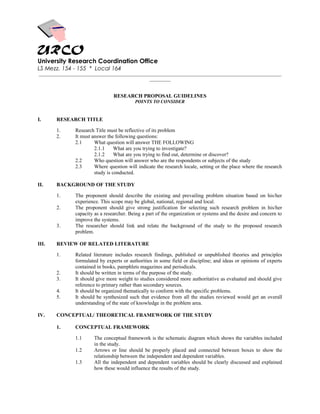The document provides guidelines for developing a research proposal, outlining 10 sections to address: 1) research title, 2) background of study, 3) related literature, 4) conceptual/theoretical framework, 5) statement of problem, 6) assumptions, 7) significance of study, 8) definition of terms, 9) scope and limitations, and 10) methodology. Key recommendations include ensuring the title reflects the research problem, providing strong justification for the selected problem, reviewing primary sources, outlining the variables in the conceptual framework, stating sub-problems that are not yes/no questions, and describing the research design, population/sampling, instruments, and statistical treatment of data. A bibliography and work/financial plans should also



